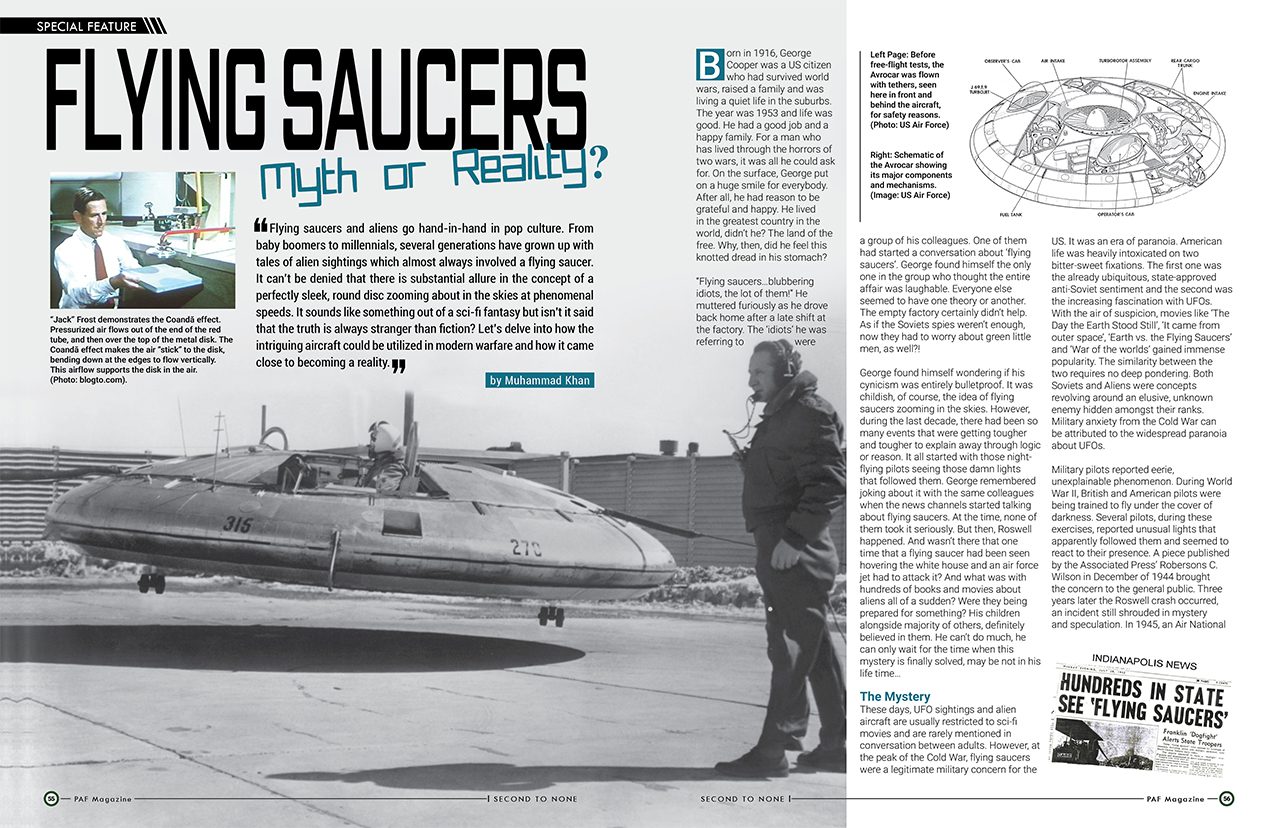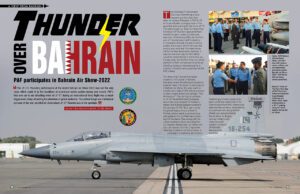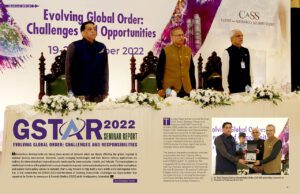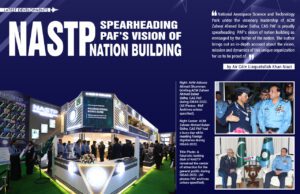Flying saucers and aliens go hand-in-hand in pop culture. From baby boomers to millennials, several generations have grown up with tales of alien sightings which almost always involved a flying saucer. It can’t be denied that there is substantial allure in the concept of a perfectly sleek, round disc zooming about in the skies at phenomenal speeds. It sounds like something out of a sci-fi fantasy but isn’t it said that the truth is always stranger than fiction? Let’s delve into how the intriguing aircraft could be utilized in modern warfare and how it came close to becoming a reality.
Born in 1916, George Cooper was a US citizen who had survived world wars, raised a family and was living a quiet life in the suburbs. The year was 1953 and life was good. He had a good job and a happy family. For a man who has lived through the horrors of two wars, it was all he could ask for. On the surface, George put on a huge smile for everybody. After all, he had reason to be grateful and happy. He lived in the greatest country in the world, didn’t he? The land of the free. Why, then, did he feel this knotted dread in his stomach?
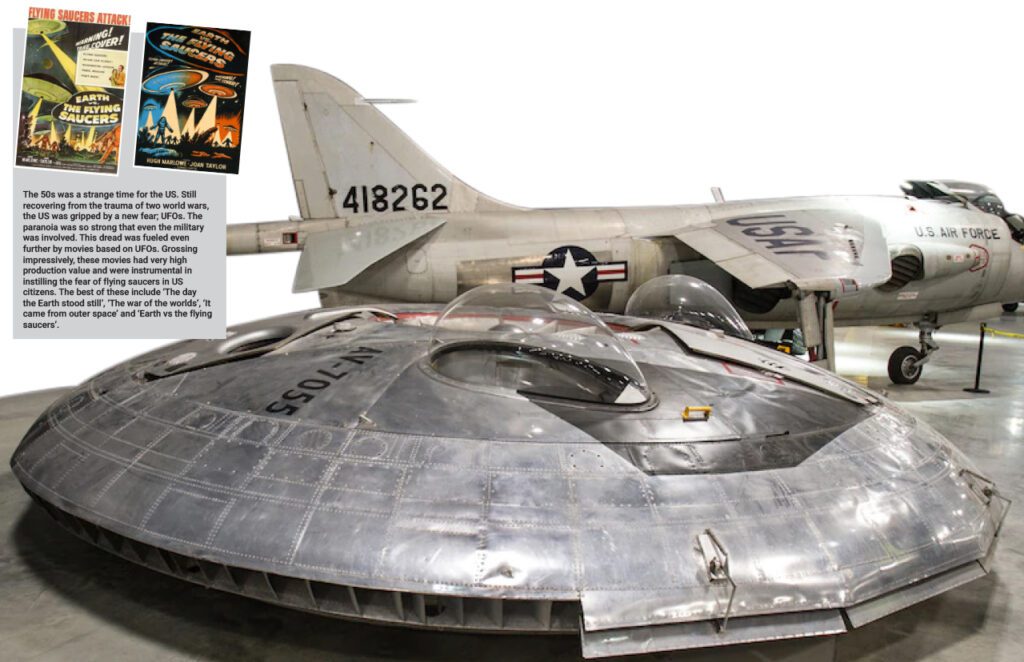
“Flying saucers…blubbering idiots, the lot of them!” He muttered furiously as he drove back home after a late shift at the factory. The ‘idiots’ he was referring to were a group of his colleagues. One of them had started a conversation about ‘flying saucers’. George found himself the only one in the group who thought the entire affair was laughable. Everyone else seemed to have one theory or another. The empty factory certainly didn’t help. As if the Soviets spies weren’t enough, now they had to worry about green little men, as well?!
George found himself wondering if his cynicism was entirely bulletproof. It was childish, of course, the idea of flying saucers zooming in the skies. However, during the last decade, there had been so many events that were getting tougher and tougher to explain away through logic or reason. It all started with those night-flying pilots seeing those damn lights that followed them. George remembered joking about it with the same colleagues when the news channels started talking about flying saucers. At the time, none of them took it seriously. But then, Roswell happened. And wasn’t there that one time that a flying saucer had been seen hovering the white house and an air force jet had to attack it? And what was with hundreds of books and movies about aliens all of a sudden? Were they being prepared for something? His children alongside majority of others, definitely believed in them. He can’t do much, he can only wait for the time when this mystery is finally solved, may be not in his life time…
The Mystery
These days, UFO sightings and alien aircraft are usually restricted to sci-fi movies and are rarely mentioned in conversation between adults. However, at the peak of the Cold War, flying saucers were a legitimate military concern for the US. It was an era of paranoia. American life was heavily intoxicated on two bitter-sweet fixations. The first one was the already ubiquitous, state-approved anti-Soviet sentiment and the second was the increasing fascination with UFOs. With the air of suspicion, movies like ‘The Day the Earth Stood Still’, ‘It came from outer space’, ‘Earth vs. the Flying Saucers’ and ‘War of the worlds’ gained immense popularity. The similarity between the two requires no deep pondering. Both Soviets and Aliens were concepts revolving around an elusive, unknown enemy hidden amongst their ranks. Military anxiety from the Cold War can be attributed to the widespread paranoia about UFOs.
Military pilots reported eerie, unexplainable phenomenon. During World War II, British and American pilots were being trained to fly under the cover of darkness. Several pilots, during these exercises, reported unusual lights that apparently followed them and seemed to react to their presence. A piece published by the Associated Press’ Robersons C. Wilson in December of 1944 brought the concern to the general public. Three years later the Roswell crash occurred, an incident still shrouded in mystery and speculation. In 1945, an Air National Guard P-51 Mustang was ordered to intercept a flying saucer over North Dakota. In another incident that was a bit too close for comfort for the US, flying saucers were spotted hovering above the White House, this time prompting the Air Force to launch a bevy of F-94 to intercept the aircraft. During this time, the US government officially instructed citizens to report supposed UFOs to a new division of the Air Force called ‘Project Blue Book’. Citizens reported over 12,000 UFO sightings that occurred between 1947 and 1969. More logical minds started speculating that these UFOs were, in fact, not aliens but Soviet aircraft, much more sophisticated than any technology that the US possessed at the time. This perspective was also propagated, to win over support from the public to spend more funds in developing advanced aircraft. A dirge of experimental aircraft was already being developed by the allies, some of which had designs which would be considered ‘out there’, even by current standards. It was the perfect time for the Avrocar to make its entry. A project that originated in Canada, the Avrocar was literally a flying saucer in the making, one that would fly at unimaginable speeds and heights, dominate the battlefield effortlessly. Recently declassified documents by the U.S. National Archives have shed light on this extraordinary project. Turns out, while beings from outer space might exist or not, flying saucers nearly did.
Background
Military interest in the Avrocar was deeply embedded in a capability termed Vertical Take-Off and Landing (VTOL). As is obvious from the name, these aircraft possessed the ability to take-off and land vertically, eliminating the need for cumbersome runways and the accompanying infrastructure. The Allies were seeking VTOL capabilities owing to America’s atomic bombs’ attacks on Japan and the Soviet testing of its own atomic bombs in 1949. It was predicted that in case of the next war, the first targets of nuclear attacks would be military installations and air strips. VTOL was the most promising solution. These aircraft would eliminate the need for lengthy runways and require much lesser storage space.
Avro Aircraft Ltd was a Canadian aircraft manufacturer that was working on VTOL technology, along with numerous other endeavours. Now defunct, Avro was founded in 1945 and hired 50, 000 employees right off the bat. This fact made it the 3rd largest company in Canada before eventually closing down in 1962. Avro had a department titled ‘Special Projects Group’ (SPG).
Jack Frost was at the helm of SPG, a man who knew what he was doing. The British engineer had worked on multiple cutting-edge aircraft designs. Before joining Avro in 1947, he had been a valued part of Britain’s de Havilland Aircraft Company. There he had been a crucial part of the team that had developed the jet-powered, twin-boom DH-100 Vampire, the twin-engine DH-103 Hornet and the tailless DH108 Swallow. Once recruited by Avro, he helped design Canada’s first and long-range fighter-interceptor, the CF100 Canuck. Frost was perfect for the development of a flying saucer because one, he believed that the VTOL was the dire need of the times and two, that flying saucers had been developed by the Germans.
“Frost believed that the Germans had developed some form of flying saucer-like aircraft,” Palmiro Campagna, an engineer with the Canadian Department of National Defence, has explained. Campagna wrote a book about Avro called ‘Requiem for a Giant’.
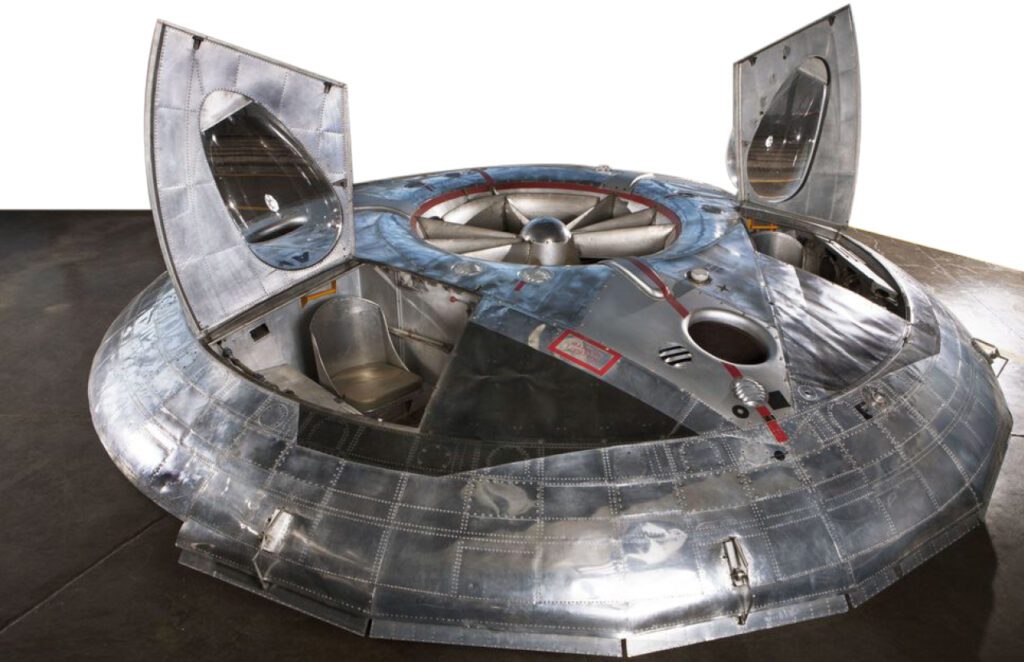
In 1952, the Canadian government funded an Avro project titled Project Y-2 to create a VTOL aircraft. After just a year, Frost and his crew had developed a wooden mock-up of a flying disc. The press somehow got hold of images of the project and the Canadian military were pressed into revealing the details of the project, claiming that aircraft was not only capable of a vertical take-off but could reach speeds up to 1500 mph. However, despite these claims, the government prioritized other on-going projects and securing funds was not easy.
Luckily for Avro, the US was exceptionally open to novel approaches and technology in that particular era. In 1953, a delegation of defence experts from the US were on an official visit of the Avro plant. When the group toured Avro’s SPG building, Frost showed them his secret models, and mock-ups of the VTOL aircraft he was working on. Some of these materials had not even been seen by Avro’s top brass. The visitors left impressed. The timing couldn’t have been better. Both the US army and the air force were fastidiously looking for an aircraft that would meet their individual needs.
The US Army was on the lookout for a subsonic aircraft that would act as both a reconnaissance and transport vehicle. USAF, on the other hand, had even more gruelling requirements. It needed an aircraft that possessed VTOL capability, completely obliterating the need for runways. Another requirement of USAF was the capability to hover behind enemy lines while possessing the speed needed to easily intercept in-bound fighters and bombers.
The Avrocar boasted abilities to fulfil each and every single one of these requirements. Two years after the visit, Pentagon gave the go ahead to develop a $750, 000 contract to further develop Frost’s flying saucer. The project was re-designated the VZ-9AV Avrocar. ‘VZ’ stood for ‘experimental vertical flight,’ ‘9’ for the ninth concept proposal, and ‘AV’ for Avro.
Avro had Jack Frost set up the required infrastructure for construction and testing of new aircraft. All of this was done in the SPG at the Avro plant in Malton, Ontario. Large spaces, empty lots and aircraft hangars were hastily constructed. The operations at SPG were highly guarded. Only personnel with the highest security clearance had access to the SPG facilities. Frank Harvey, ex-president of Aerospace Heritage Foundation of Canada, was an assembly line employee at Avro at the time. He had no access to SPG.
“Very few people got in there,” he recalls “If you walked anywhere near, there were security guards.”
Apparently, the caution was prudent on part of Avro. Declassified notes from the Soviet era made by a Major named Vasili Mitrokhin reveal that a spy had indeed infiltrated the Avro facility to gain intel on the Arrow program.
The Pentagon was confident that the Avro flying saucer would forever change the face of warfare. Bernard Lindenbaum, a member of the American Helicopter Society, was part of the flying saucer program as an Air Force officer. Writing for the society, he recalls a conversation to this effect. In meeting held in Washington, D.C. a proposal was approved to finalize funds for research and development of the UH-1 ‘Huey’ helicopter. After the meeting dispersed, he remembered overhearing an army general commenting that UH-1 would be most likely the last helicopter the army would ever buy. The replacement? Avro’s flying saucer.
The Technology
The technology for the Avrocar was flawed yet ambitious. The design went through multiple iterations, the disk/doughnut shape the most promising of all of them. This airframe was designed to solve a problem that had been posing problems for aircraft engineers for years at the time. This was to design and construct an aircraft that could perform at both subsonic and supersonic speeds. To elaborate, lift is created at subsonic speeds by air flowing around the wings of the aircraft. However, once the aircraft reaches supersonic speeds, lift is produced by shockwaves that are formed along specific points on the airframe of the aircraft.
To counter this, the Avrocar intended to exploit the Coandă effect – “the tendency of a fluid jet to be attracted to a nearby surface” – to provide lift and thrust in the form of a single “turbo rotor” blowing exhaust out the rim of the disk-shaped aircraft, similar to a hovercraft – but on steroids. The main structure was a large equilateral triangle, to which the various components were attached. The turbo-rotor was a 124-blade contraption which was placed right in the middle of the triangle. The rotor’s thrust was ejected through an opening in the lower surface in the downwards direction. Some of this thrust was also diverted to the outer rim of the disk to power the control system.
It was 18 feet in diameter and 3.5 feet tall at the centre. The upper surface being curved, the bottom less so. The airframe of the saucer was comprised primarily of aluminium, weighing around 1400 kgs. It consisted of 3 Continental J69-T-9 jet engines which supplied power to the rotor. Each of these 3 engines had its own fuel storage, oil tank and other supplementary systems. 3 small castoring wheels made up the aircraft’s undercarriage, which would later be replaced with a set of skids in later testing.
The saucer was piloted via a single side-mounted control stick. Yaw was managed using a twisting motion while pitch and roll could be controlled using standard fore-aft and side-to-side movements. The mechanism was inherently mechanical. The stick managed the flow of high-pressure air surrounding the saucer, directly attaching to several control surfaces or through cable connections.
The thrust was controlled through a large ring placed around the main disk. From a side profile, the control flap is almost invisible, designed to not be noticeable. The pilot’s controls controlled the ring in relation to the entirety of the saucer, manipulating airflow emanating outwards from the centre of the saucer. Vertical lift was achieved by pushing the entire ring downwards, which resulted in directing substantially more airflow over the saucer’s upper surface, which in turn would bend down over this surface towards the ground. Directional control relied asymmetric thrust which was attained by tilting the ring in the required direction.
It quickly became apparent that the saucer was uncontrollably wobbly when it came to forward flight. This was attributed to the fact that the aerodynamic centre of pressure was well forward from the centre of gravity. To counter this, a mechanical stability augmentation mechanism was installed in the Avrocar which operated independent of the pilot’s controls. Avrocar’s turbo-rotor cast a substantially large angular momentum and was intended to be utilized as a powerful gyroscope, which would mean a normal direction of flight for the saucer. The saucer was flown by a crew of two in the main design, situated on the airframe at separate positions.
The Moment of Truth
After months of untangling one disaster after another, it’s finally time for the big one. On 12 November 1959, Test pilot Wladyslaw “Spud” Potocki is in the cockpit of the Avrocar. The site is the emptied out industrial park in Avro’s headquarters, away from prying eyes. Spud takes a deep, contemplative breath. He’s no amateur. He has received the much-coveted British Flying Cross in WWII. He was also the test pilot for Avro’s Arrow. Today, he has been trusted with the 5680-pound Avrocar for its first flight without the 3-cable tether. He knows perfectly well how quickly everything can go downhill with this sort of unstable technology. He braces himself and pulls the control stick towards himself.
The saucer responds immediately, 18 feet of aluminium frame blasting snow and ice in all directions of the vacant park. The industrial park of Avro’s facility resonates with the shrill shriek of the 3 turbojet engines. It is noisy. Very noisy. And this is with just 3 turbojet engines, not with the eventual 6 that the saucer will have. The saucer gains height slowly yet steadily. For a few blissful moments, it seems that the years of endless toil would finally pay off and the world would enter the undeniable next stage of aviation. But then, as the aircraft rises above its 3-feet cushion of exhaust, it happens. The saucer tips to a side. Then another. In a matter of seconds, the saucer starts drooping in all directions. The crew knew this could happen. They have a term for it. They call it ‘hubcapping’, for its similarity to the way a tire’s hubcap oscillates when dropped on the ground.
It’s like trying to balance a football on a nail for Spud. He tries to stay afloat but the efforts are in vain. He aborts the flight and sets the Avrocar down.
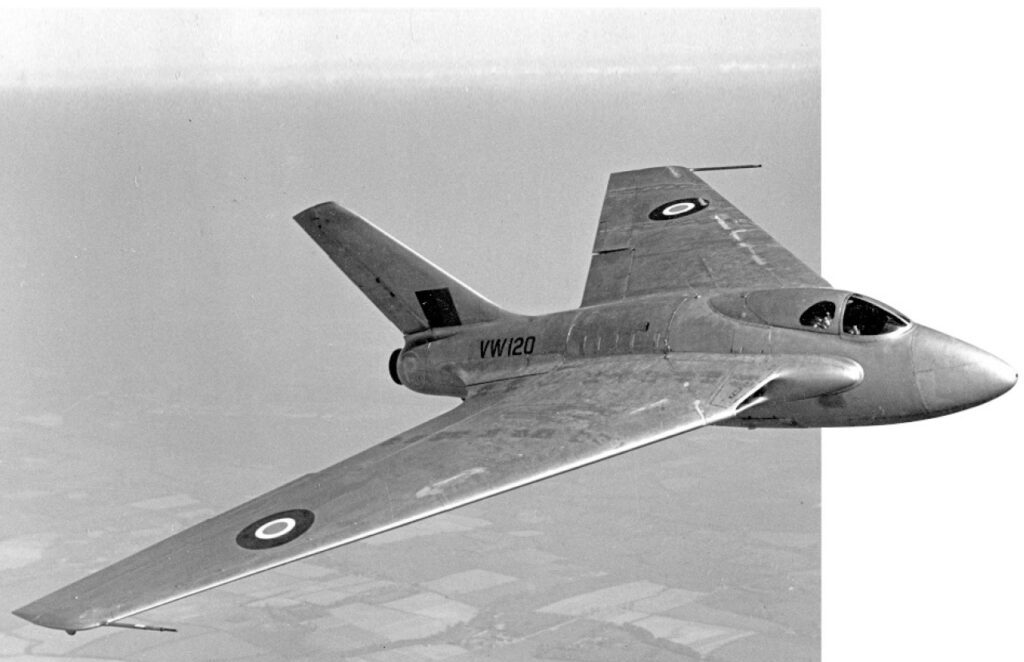
This was not by any means Avrocar’s first test flight. The first test was undertaken in May 1959, in a static hover rig. Hot gas from the exhaust was found to be getting mixed with the intakes which made a considerable dent in overall engine thrust. The ducts were found to have unexpectedly high loss, as well. The second prototype, #59-4975, was completed August 1959 and was tested on 29 September. The flight was undertaken with the saucer tethered to the ground. This was the first time ‘hubcapping’ was observed. Although, several modifications were made to the Avrocar in the coming months, it became increasingly clear that hubcapping was a problem that was inherent to the design of the saucer.
52 holes were drilled in the base of the saucer to counter the problem, each located at a distance of 3 feet from the centre. The flight test on 12 November described above with Spud Potocki, proved this modification to be inadequate, as well. After this flight, testing was halted on 5 December, 59.
Over the winters, a design overhaul was the new hope. The spoilers were taken off and a new singular ring was installed below the annular flap. This ring shifted in relation to the craft under control input. Testing was once again resumed from January 1960 and things finally seemed to be looking up. The thrust was much more powerful, the lift was adequate. However, although the redesigned control systems had reined in the hovering qualities, the saucer was much more unstable at higher speeds, starting from 30 knots. The first Avrocar, which had been sent to NASA’s Ames Research Centre at Moffett Field in Calif was also modified. In April 1960, it was tested in the centre’s 40 by 80 ft wind tunnel. This test helped diagnose the problem. The ring that had been installed obstructed a sizeable portion of the engine thrust. This led to the power being significantly reduced. As the craft sped up, the airflow on the underside decreased the recirculation, lowering the lift owing to airflow over the upper surface of the saucer.
With Avrocar’s rocky yet promising journey, Jack Frost resolutely believed that the project was still salvageable. He proposed a set of new modifications. Unfortunately, Pentagon didn’t play ball. Frost’s designs were not accepted and the funding for Avrocar and related WS-606A supersonic VTOL programs was officially shut down in December 1961. Avro aircraft’s executives tried to launch additional VTOL research projects. These included designs pertaining to the existing disk frame and a different ‘lift jet’ variety. Unfortunately, Avro was unable to secure funding from the Canadian government or any other source. This marked the end of the Special Projects Group of the firm. The sudden lack of interest in VTOL technology was partially owing to the strategic realization on the military’s part that a nuclear first strike would not be used at the start of a European war.
After SPG shut down, Jack Frost left for New Zealand. He designed innovative aircraft for the national airline. After he had officially retired, he spent his time designing out-of-the-box solution with promising aviation students and enthusiasts. He passed away from a heart attack in 1979, leaving behind a legacy of aviation designs that continuously pushed the boundaries of convention.
The legacy of the Avrocar
The US military still possess the two Avrocar prototypes. One is kept in storage, disassembled in crates, at Joint Base Langley-Eustis in Virginia under the custody of the U.S. Army Transportation Museum. The other prototype used to be in the Smithsonian, where it gathered dust as a sort of seldom observed novelty. In 2007, however, the National Museum of the U.S. Air Force at Wright- Patterson Air Force Base requested the Smithsonian for the saucer in a swap of sorts.
The prototype was flown in from the Smithsonian to Wright-Patterson inside a C-5 Galaxy transport plane. A special restoration crew constructed new pilot canopy bubbles, entire new seats and made general aesthetic repairs. The Avrocar was ready to shine once again in 2008, after decades in the shadows.
Even though the Avrocar was not able to achieve what it had set out to be, the work was not in vain. The findings of the development of the Avrocar would go on to be used in the airframes of later aircraft like the British AV-8B Harrier jump-jet II and the current F-35B Joint Strike Fighter. The influence of the flying saucer can also be found in the advanced fighters like F-22 Raptor and the Russian Su-35, both of which use the Avrocar’s mechanics of directing the flow of exhaust as it ejects the aircraft with the objective of controlling the direction of flight.
